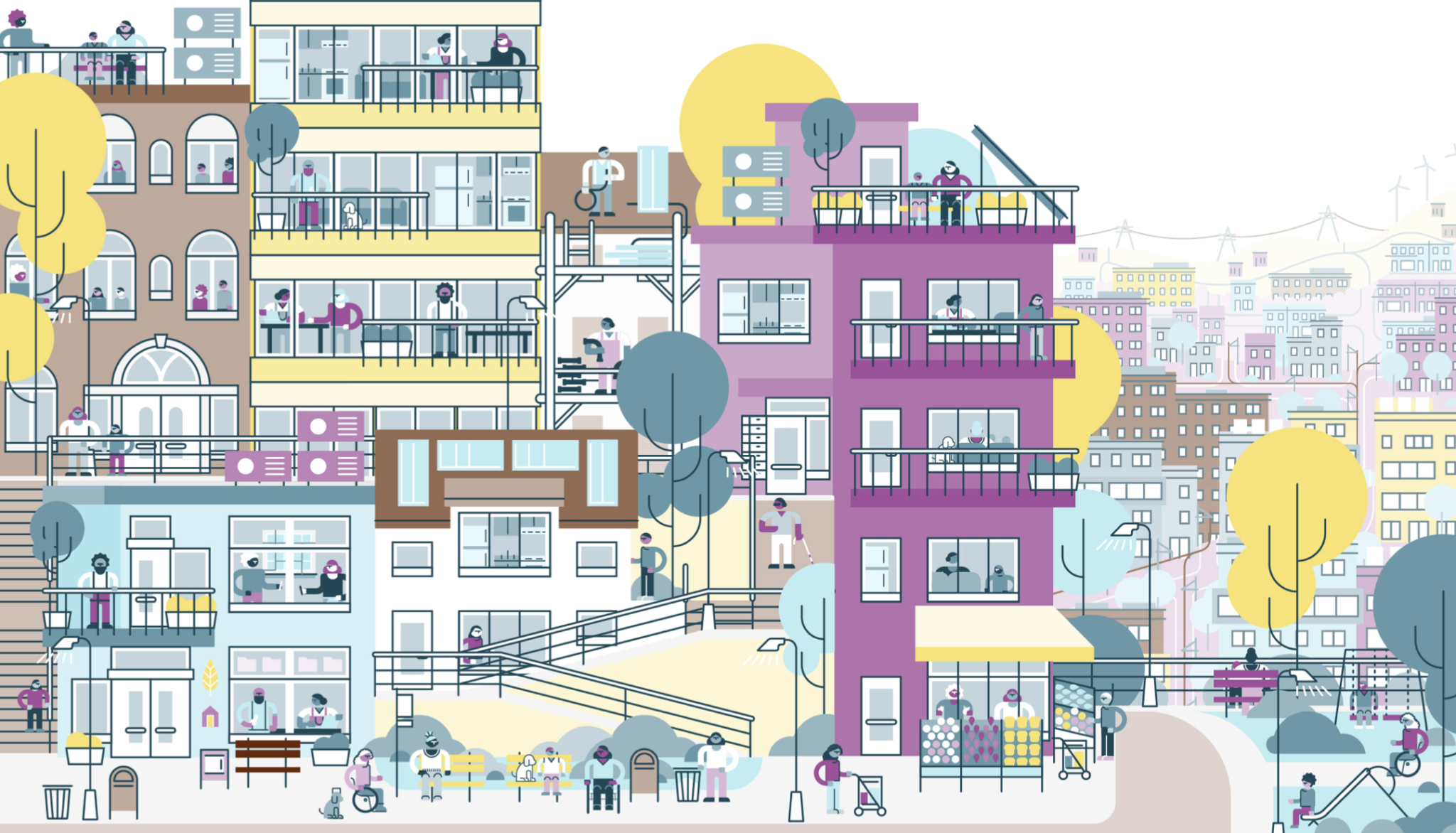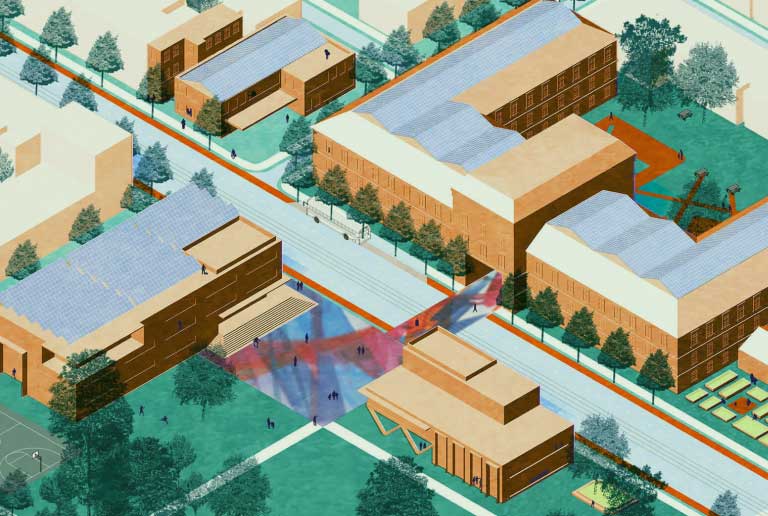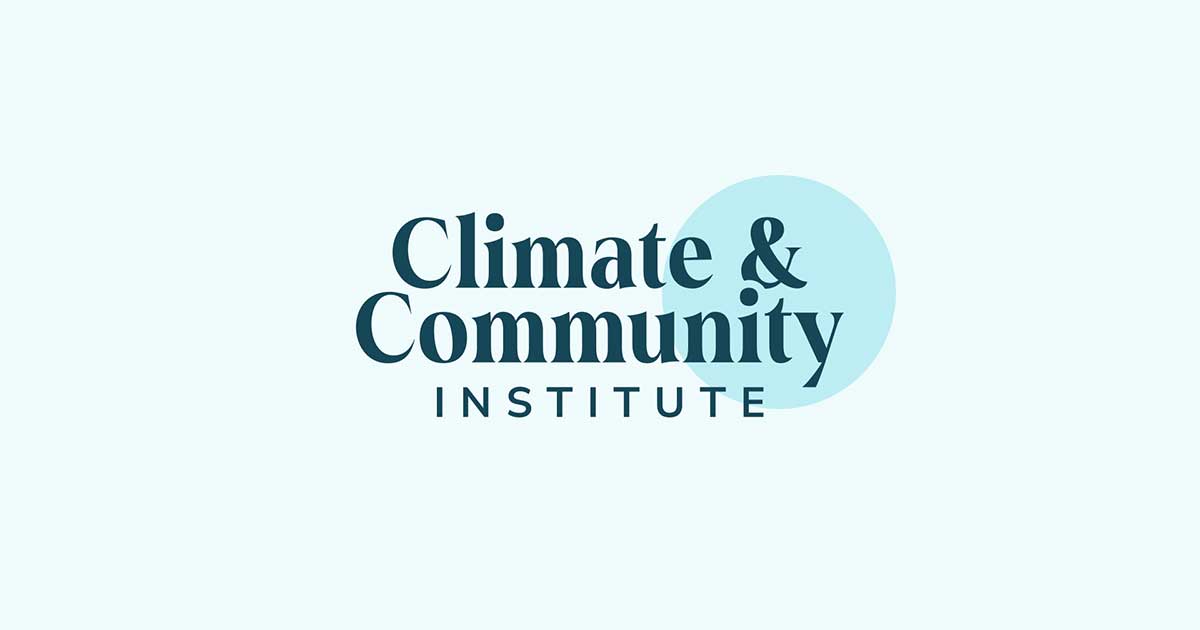Public School Property Conversions
Making Use of Surplussed School Land in the Green Transition
Key Takeaways
The precarity of US public school district finances has led to a pattern of short-term fixes including “right-sizing” districts by laying off workforces and selling off school properties—actions that fail to solve districts’ budgetary woes in the long-term while deepening economic and social burdens for broader school communities— as climate disasters destabilize communities and the need for fully decarbonized systems grows.
Rather than close schools and dispose of buildings on the private market, school districts should convert their “excess” properties to green social housing with priority units for students and staff.
Even accounting for the upfront costs, converting existing public assets can cost less than new site acquisition, and green workforce housing can generate rental income streams that can feed back into stressed school district budgets while preserving and expanding public sector capacity for green, socially necessary purposes.
Converting surplussed school land into green, socially useful functions like housing offers additional benefits including relieving the housing affordability crunch for their communities’ families and students, stabilizing enrollment rates, bolstering community ties that contribute to student success, retaining educator workforces, and reducing building-related emissions and the long-term costs of climate inaction.
School district leaders across the country are panicked about their budgets. From Boston to Wichita to Los Angeles, school district officials are projecting deficits. Given that their districts are shrinking, administrators sometimes see no alternative but to “right-size” operations by laying off staff and selling off public school real estate. Districts typically unload this unused property below market value, thereby helping subsidize future developments that have no requirements to meet community needs for affordable housing.
Is this the only way to address budget shortfalls? Public school closures during the Great Recession exacerbated racial inequities, destabilized neighborhoods, harmed student achievement, and generated only short-term savings insufficient to the budget pressures wrought by strained tax bases, enrollment decline, and high levels of capital debt. At the same time, housing affordability has risen across the country. A record 22.4 million households are spending nearly one third of their incomes on rent and utilities, with the average minimum wage worker needing to work four full-time jobs to afford rent.
Rather than close schools and dispose of buildings and land on the private market, school districts should convert their “excess” properties to green social housing with priority units for students and staff.
Rather than close schools and dispose of buildings and land on the private market, school districts should convert their “excess” properties to green social housing with priority units for students and staff. The rationale for such property conversion is four-fold:
- Stabilizing enrollment rates: Although enrollment decline is likely a product of many factors, including voucher and charter school competition, low birth rates, and restrictive immigration policies, recent research points to the cost-of-living crisis as a key piece of the puzzle. Housing unaffordability has hit low-income families with school-aged children particularly hard, as families are being forced to move away from their schools. Any serious policy push to stabilize public school enrollment must address housing affordability for families with school-aged children.
- Creating the community ties necessary for student and teacher success: When Black, brown, and working-class households are pushed out of their neighborhoods and into housing precarity, communities fracture. These ruptures affect more than just enrollment: They burden families with longer and more expensive commutes to work and school and take a toll on the teachers who remain in the district and struggle to maintain positive, lasting relationships with a revolving student body. If school districts want to set students and teachers up for success, they need to join efforts to stop displacement and stabilize community ties.
- Helping school districts retain their workforce: The cost-of-living crisis extends to middle-income workers, such as teachers and paraprofessionals, who can no longer afford to live where they work. In Los Angeles, for example, new teachers today need to spend 42 percent of their salaries on rent, a 7-percentage-point increase from 2019 (figure 1). In neighboring San Diego, new teachers need to spend about 63% of their take-home pay on rent to afford a one-bedroom. Providing affordable, quality workforce housing can help keep teachers in the classroom.
- Reducing building-related emissions and long-term costs of climate inaction: Although it has long been clear that all new construction needs to be green, school properties should be priority sites for climate resiliency upgrades and efforts to stabilize the cost of living and ensure the safety of communities. Building green social housing on public school grounds represents a significant opportunity for school districts to tackle the climate and cost-of-living crises together.
Converting surplus school properties to green social housing isn’t just socially beneficial; it also makes financial sense. When land costs are high—as they are in many localities today—nonprofit developers and city agencies are effectively priced out of building affordable housing. With school properties, however, districts will be converting existing assets in which taxpayers have already invested and from which taxpayers deserve to reap benefits. Though conversion projects will have upfront costs, these will likely be lower than projects that involve new site acquisition, and the housing will generate rental income streams that can feed back into stressed school district budgets. School conversion projects also preserve and expand public sector capacity to develop more green affordable housing in the future.




